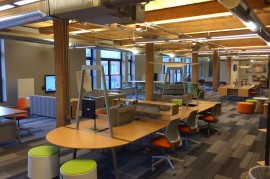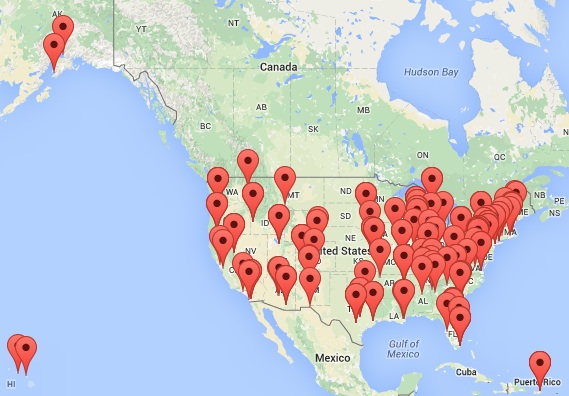Considering entering an MBA program? Your timing is outstanding. According to research from the Graduate Management Admission Council, 91% of recruiters were planning to hire graduate management talent who possessed MBA degrees in 2021.
Reports from GetSmarter support the accuracy of those findings, revealing that 83% of companies said they planned to onboard MBAs in 2021. In other words, you’re on the right track if you’re considering pursuing an MBA degree through a rock-solid program delivered by a school with a strong reputation.
MBA seekers want to augment their undergraduate learning with the broad, comprehensive knowledge of managing a business enterprise and the skill set provided by an MBA. Another reason prospective students seek an MBA is career switching, and employees whose MBA curricula included coursework devoted to understanding the basics of managing others in the fields of analytics and technology are highly valuable in today’s data-intensive landscape.
No matter why you keep coming back to the idea of getting into an MBA program, you may find it helpful to identify yourself as a specific type of graduate student. Generally speaking, the majority of MBA students are either accelerators or pivoters.
Which type of MBA student are you?
From a broad standpoint, accelerators tend to be people whose career path includes ambitious “climb the ladder” goals. Typically, accelerators feel like they can’t take their next big step without a stronger understanding of the variety of functional areas important in the corporate world today. Through their MBA program, they expect to learn how to think strategically about the enterprise as a whole, to identify the right questions or problems to be addressed, and to address them so they can snag key promotions and rise through the ranks.
Pivoters also want education, but they want to use it to change their occupations or industries. For them, MBAs are ways to get a foot in a new door.
Take Tyler Whiteman, for example. He spent 10 years in the travel industry and did regional theater working as an actor and singer.
Tyler came to Olin Business School at Washington University in St. Louis for his MBA because he wanted to make a complete career switch. Ultimately, he chose to become a marketing intern for AB InBev and earned honors for his performance at the seventh-annual PepsiCo MBA Invitational Business Case Competition. He credits his WashU Olin experience for giving him a leg up against fierce competitors. Having the support of an esteemed faculty while solving real-world problems and learning the soft skills that come from working with people and organizations that represent cultures different from their own are tremendous experiential benefits.
Find the right MBA program for you
To be sure, you might be a combination of the aforementioned MBA learners. Or you might fit into a unique category. Regardless, you owe it to yourself to spend time getting to know the lay of the land when it comes to MBA programming. So many MBA programs are available.
You have the traditional immersive full-time two-year programs. You have in-person part-time programs that take longer to finish but can flex to accommodate a busy family lifestyle. Some MBA degrees can be earned partially or completely online.
It’s fairly easy to find a delivery format that will work with your schedule and circumstances.
Format isn’t the only defining factor of an MBA program, though. If you aren’t interested in taking a standardized test like the GRE or GMAT, you can still apply for many MBA programs. A significant number of schools have waived this requirement. Because there’s no guarantee those waivers will stay in place forever, you may want to take advantage of them while they’re here.
Putting a premium on globalization
It’s worth mentioning that while you can choose among a variety of delivery methods and admissions requirements, you should absolutely demand an MBA that makes global business a central feature of its curriculum.
The world is shrinking. The more global context you can bring to your business understanding, the more valued you’ll be as an employee and executive.
This is one of the reasons a cornerstone of WashU Olin’s full-time MBA program is its global immersion program. This program happens at the front end of the MBA. Students start in St. Louis and learn the foundations of values-based and data-driven decision-making. From there, they spread their wings and go to the Brookings Institution in Washington, D.C., to discover the ways business and government align. Next, they visit Barcelona, Spain, followed by Paris and then Santiago, Chile. Over several weeks, MBA students get familiar with how marketing, consulting, supply-chain management, and so many other functional areas interact in a global context.
The global immersion program helps incoming MBA degree candidates bond with their cohort from the very start. The program becomes the basis for future learning and other opportunities, like the ability to take globally focused courses such as Olin’s African business class and exchange programs. When students move closer to graduation, they may be able to work with international companies. Case in point: Some recent MBA students worked with the Ecuadorian Soccer Federation and were able to join them at a game held in the United States.
At the end of the day, it’s easier to develop soft skills like empathy, teamwork, and communication when you’ve formed cross-cultural relationships with a variety of MBA classmates, teachers, and companies.
A successful post-MBA experience
The choice of an MBA program shouldn’t be limited to what happens during your coursework. Having access to career services matters, too. At Olin’s Weston Career Center, MBA students are provided with individualized career coaching and mentoring. This prepares them for internships and real-world jobs. As a “thank you,” many WashU alumni return to help the next generation of MBA graduates pursue their dreams and goals.
At a foundational level, your desire to earn an MBA shows that you’re ready to change at least a small part of the world. And small changes can end up having big outcomes for individuals, communities, and organizations. Whether you’re a pivoter, an accelerator or a one-of-a-kind type of MBA candidate, follow your instincts. The right MBA program can help you gain cultural competency as well as hone your skills in areas that are important to modern employers. It’s never the wrong time to become a stronger, more confident leader.







